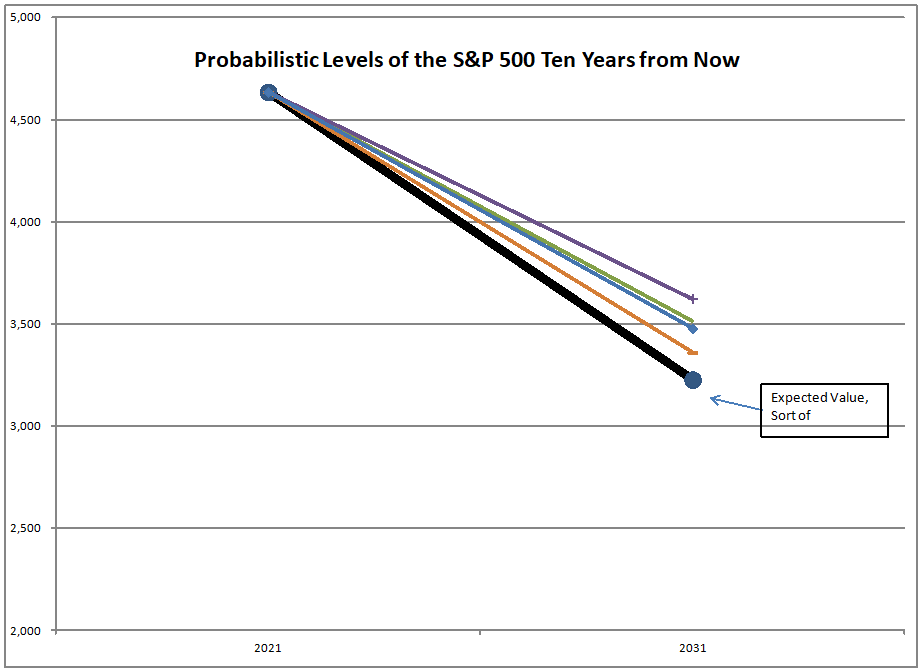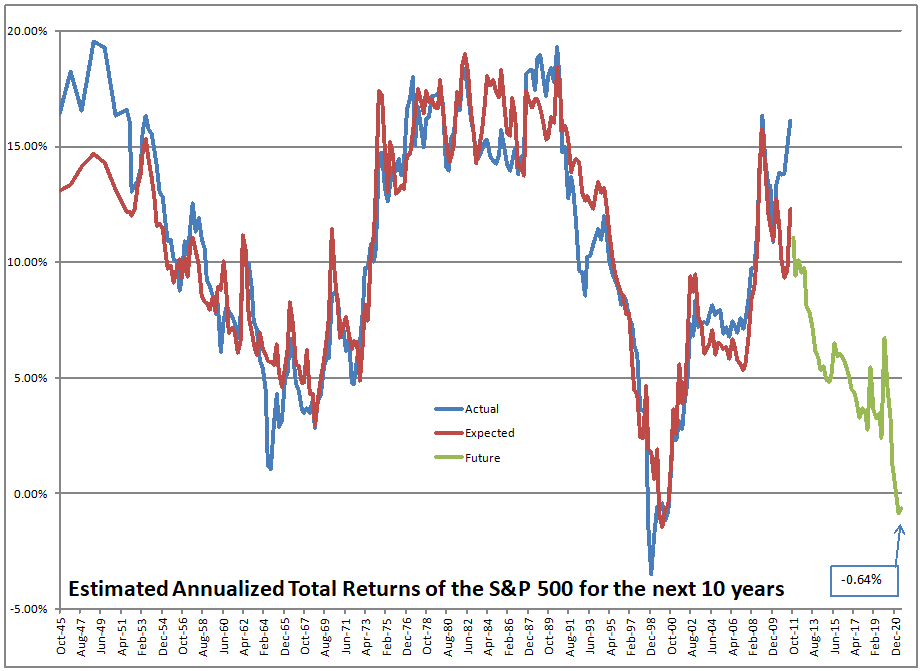Image credit: All images belong to Aleph Blog
This should be a brief post. At the end of the third quarter, the S&P 500 was poised to nominally return -0.64%/year over the next 10 years. As of the close today, that figure was -1.83%/year, slightly more than the -1.84%/year at the record high last Friday.
The only period compares with this valuation-wise is the dot-com bubble. We are above dot-com level valuations. And if you view the 10-year returns from the worst time of the dot-com bubble to now, you can see that the results they obtained are milder than what I forecast here.

Of course, a lot of what will happen in nominal terms will rely on the actions of the Fed. Will the Fed:
- Allow a real recession to clear away dud assets that are on life support from low rates? (Collapsing the current asset bubble)
- Change the terms of monetary policy, and start directly monetizing US Treasury debt? (Risking high inflation)
- Continue to dither with financial repression, leaving rates low, not caring about moderate inflation, with real growth zero-like. (Zombie economy — this is the most likely outcome for now)
In some ways the markets are playing around with something I call “the last arbitrage.” Bonds versus Stocks. The concept of TINA (There is no alternative [to stocks]) relies on the idea that the Fed will be the lapdog of the equity markets. If stocks are high, the Fed is happy. Phrased another way, if the Fed maximizes wealth inequality, it is happy.
And the Fed will be happy. They live to employ thousands of macroeconomists who would have a hard time finding real employment. These economists live to corrupt our understanding f the macroeconomy, justifying the actions of the Fed. The Fed just wants to scrape enough seigniorage to pay the staff, and keep Congress and the Administration mollified. All taken out of the hides of those who save.
So with the last arbitrage… interest rates have to stay low to keep the stock market high, even if it means slow growth, and moderate and growing inflation. The likely change promulgated by the Fed today, raising the short rate by 0.75% in 2022 will likely flatten the yield curve, leading to a crisis of some sort, and push them back into QE and near-zero short rates. The stock market will have a pullback and a rally, but what of inflation? How will people act when there is no way to save for the short-run, without inflation eating away value?
Brave new world. The Fed is stuck, and we are stuck with them. Gold does nothing, and would be a kinder mistress than the Fed. Better to live within strict limits, than the folly of an elastic currency. But as is true with all things in America, we are going to have to learn this the hard way.
PS — As for me, I am living with value stocks, small stocks, and international stocks. Very little in the S&P 500 here.


Hi David, thank you for your insight as always. A question for you, if you might, and you have likely covered this elsewhere: the question is “what about Japan?” I’ll spare you the details as I’m certain you already know what I’m talking about and already have an answer (but I will be more specific if you like). Please and thank you
Does Japan have balance sheet measures for asset values? I’ve heard Germany does — but that is what you need for building this model.
Refreshing to see a return to posting within your realm of expertise. It is appreciated.
Do we need to take crypto into account in the equation? Would that lower the percentage meaningfully?
It might, but we would need to create a series in the Fed’s Z.1 report so that it is standardized. Don’t know if that will ever happen. It would affect the denominator of my ratio, but not the numerator.